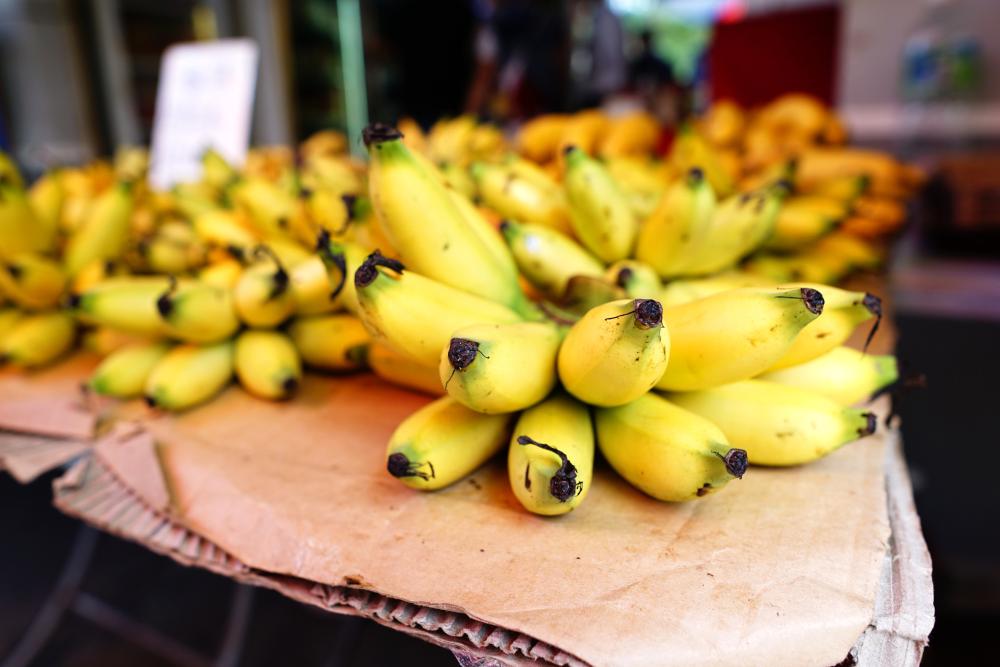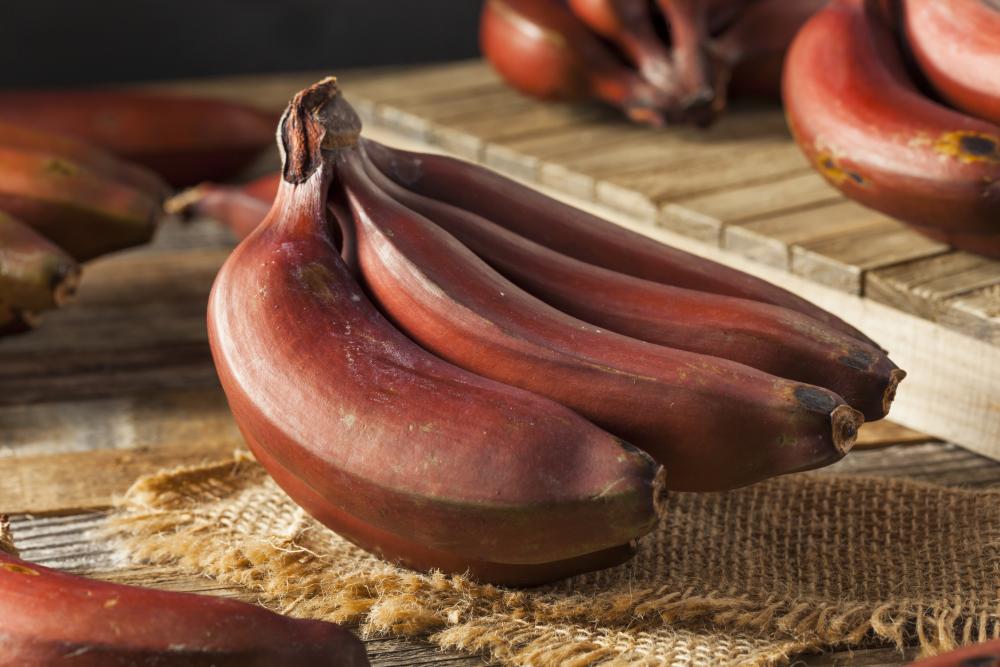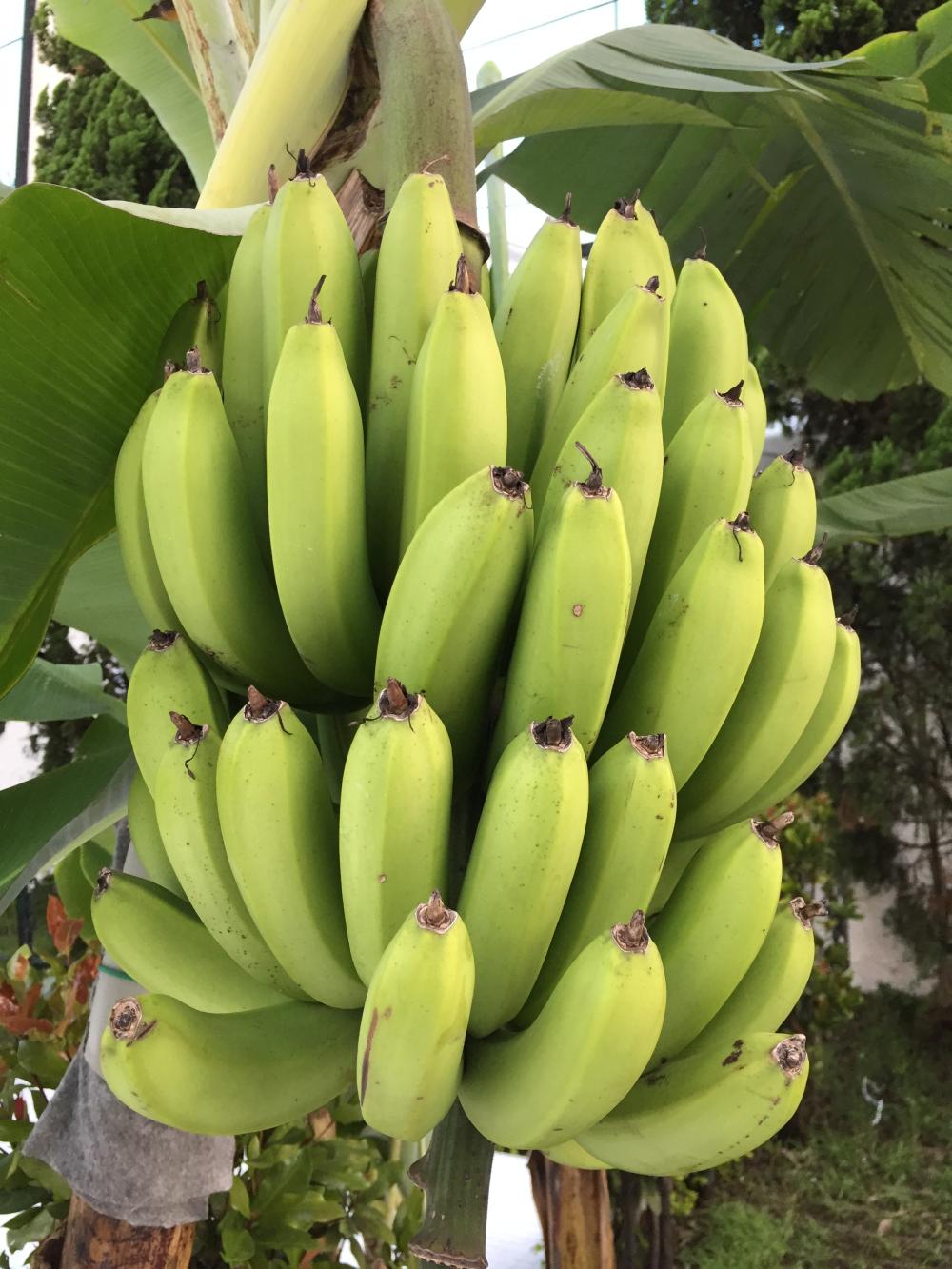12 Banana Varieties You Can Grow In The Garden
Holding a banana in one’s hand, it’s hard to imagine how far bananas have come. The early species were less than flattering with their thick peels, meager flesh, and bitter taste. Some even had seeds embedded in what little flesh the ripe banana had.
But that’s all in the past. Banana varieties these days come in all shapes, colors, and sizes. From the large yellow sweet Cavendish to the tiny but no-less-sweet Lady’s Finger banana. You also have red bananas, green bananas, and bluish bananas that you can cook. The world of bananas is as diverse and colorful as a rainbow in a fairy tale. So if you want to grow a banana tree or two in your garden, you can choose any of the following varieties.
Fehi
Fehi bananas have bright tropical colors that range from reddish to outright orange. A hand of Fehi has short and fat bananas sticking out of it at right angles like stubby fingers. When they become ripe the skin gets this copper color that reminds you of the sunset skies in the tropics. The flesh under the skin is equally colorful and can be either orange or creamy. But the Fehi is not for eating raw. This banana releases its flavors and an abundance of nutrients when it’s either cooked or boiled. The raw ripe Fehi has more starch content than sugar so it’s not ideal for fruit salads or healthy smoothies. Still, the ornamental values of this cultivar make up for its shortcomings in taste and flavors.
Cavendish
A popular banana cultivar both as a tree and as a fruit. The tree has a green trunk and lush cascading green leaves that arch and creates a dense and appealing visual landscape. Most bananas that you find in supermarkets are cavendish. They’re slightly sweet, have less starch content, and more moisture than many cultivars. The key to enjoying this delicious cultivar is not to let it go overripe. Slightly less than ripe is ideal since the texture of the banana stays firm while the core of the banana turns sweet and creamy.
Underripe Cavendish is packed with starch. This is the starch that turns into sugar when the fruit is right. As for the overripe banana, it becomes mushy with the skin turning dark and the flesh becoming transparent. Cavendish has a small window of ripeness but you can slow the process by keeping it in the fridge. This allows you to keep it fresh for up to 4 days. If the banana goes overripe you can make banana bread out of it or cook it with baked oatmeal.
Dwarf Cavendish
Similar to Cavendish bananas but on a smaller scale. The trees are considerably shorter and more compact than the regular Cavendish tree and the hand of bananas carries shorter fruits. The light green fruits have purple spots that disappear when they ripen. The dominant color of a ripe dwarf Cavendish banana is bright yellow.
The leaves of the tree are smaller and wider so they resist strong wind and are not prone to tearing like many other banana trees. The canopy maintains its elegant shape and green luster throughout the growing season. So in addition to their tasty fruits, the trees are a good ornamental addition to any garden or landscape. You can eat the ripe fruits raw or use them in fruit juices and salads. Not recommended for cooking though as the ripe bananas don’t have a good texture and tend to break down easily.
William Banana
Another Cavendish variety that sometimes goes by the Giant Cavendish name. This variety is the exact opposite of the Dwarf Cavendish. The tree is large and tall, the leaves overarch and touch the ground and the hand of the banana carries giant fruits hanging upside down. Everything is large with William banana except for the taste and flavor. It’s mildly sweet and has a flavor to match. If you find this variety in your local supermarket, the bananas will be green. But once you take them home and leave them on the kitchen table for a few hours, they’ll quickly turn yellow. That means you have one day at most to eat them before they become overripe. Use this banana anywhere you’d use the Cavendish. That includes cooking, baking, and making desserts.
Praying Hands
Praying Hands bananas are exactly what you’d expect them to look like. Each hand grows two multiple two-rows of the fruit. The two rows grow on top of each other and facing each other. So they look like two hands clasped together in fervent prayer. But that’s as far as their unique name will carry them. Other than the unusual rows of fruits, the bananas have no special appeal either in taste or texture. The high starch content of the fruit doesn’t break down when it ripens. The only thing that distinguishes it in terms of taste is the strong vanilla flavor. Use it mainly to bake pies and banana bread. The fried banana chips maintain their strong flavor and serve as a delicious side dish to a juicy burger or BBQ.
Red Banana
This cultivar really stands out with the red color of the ripe bananas. The flesh underneath is also pink when ripe. A hand of red bananas dangling from the banana tree is something you’d like to see in your garden every day. However, that only happens for a short period of time in the late summer and it means you were late to harvest your bananas. It’s not recommended to allow the red bananas to ripen on the tree. As with other banana cultivars, they have a short window and need to be consumed quickly. So it’s better to harvest them green or when they’re about to turn. Keep the hands in a large fridge and take out as much as you need and let it ripen for a few days in a cool and dry room. The flavor of this dazzling red banana varies. Sometimes it tastes like raspberry but most often it’s an unmistakable earthen flavor.
Apple Bananas
Short and sweet, the small apple banana is packed with nutrients, flavors, and sweetness. Grown mainly in Hawaii, the locals sometimes call them Candy Apple Bananas. It’s not clear where the apple fits in, but one thing is obvious, this small banana is so tasty it can become addictive. This is mainly a tropical tree so it needs all the right conditions associated with the tropics to thrive and grow. This includes high temperature, full sun, and high humidity. If you live in a zone that fits these criteria, you can give the apple banana a try. The ripe fruits become greenish-yellow with a firm texture and pinkish flesh. It has a longer ripening span than other banana cultivars, so you can consume it fresh at your leisure.
Blue Java
If all of these banana varieties seem overwhelming but nothing stands out yet, wait till you get up close and personal with the Blue Java banana. The aptly named cultivar produces bright light blue bananas with vanilla custard flavors and a creamy texture that reminds you of another popular dessert. This is why it’s sometimes known as the Ice Cream Banana. This banana is a feast of colors and flavors. Besides, this is a hardy tree with a high tolerance for cold weather. So they’re more suited to cold zones from 4 to 6. Most people eat the Blue Java raw simply because it has the taste, texture, and flavor of ice cream. Blend it in your smoothie and enjoy its rich flavors.
Manzano
Speaking of bananas that serve as a dessert in their own right, the Manazon bananas are a good example. The yellow stubby bananas may not look any different than other small bananas that are no bigger than a finger. But they pack a punch with their strawberry flavors and creamy textures. I think it’s safe to say that if you have a couple of Manzano banana trees growing in your garden, you’ll save a lot when you go grocery shopping. Not to mention that these natural desserts are healthier and have more nutrients. We’re talking about copious amounts of vitamin C, fiber, magnesium, and amino acids in the ripe bananas. Use Manzano bananas in ice cream, and pies to add a natural flavor and cut down on your intake of processed sugar.
Saba
Saba and Praying Hands are close relatives. They both have double rows of fingers touching together at the tips in prayer mode. But Saba is more popular in the Philippines where it’s an integral ingredient of the Philippines cuisine. Although Saba doesn’t have much taste or flavor, its high content of starch makes it ideal for making banana bread, ginanggang, halo-halo, and turrón. The last three are popular dishes in that country.
The Saba banana tree is a squat tree with thick green branches and angular fruits. All of these decorative qualities make them ideal for tropical gardens and exotic landscape designs. The starchy fruits can be used in baking and cooking, but they’re not recommended as a fruit salad or to be eaten raw.
Goldfinger
The Goldfinger banana is a tropical cultivar known for its disease resistance. It was first created in Honduras out of a gene pool of Asian banana cultivars but it now grows in many tropical regions across the world. It’s best suited for zones 10 and 11 with plenty of rainfall and humidity. The tree averages 10 feet high and stays lush green during the growing season and well after harvesting. Although the ripe banana has mild flavors and taste, they only release those flavors when cooked. The banana fingers are rather short and slim and have a small ripening window. Bake them in pies, cook them in dessert, and make nice banana bread out of the ripe fruits.
Burro
A small and stubby banana that goes by many names including Hog, Orinoco, and Horse. The different names are a reflection of the widespread cultivation of this banana cultivar across different regions and cultures. It’s also a testament to the banana’s credentials as a tasty and juicy fruit that can be eaten raw, mixed with other fruits to make salads and juices, and oven-baked to make delicious banana bread and banana pie. In some cuisines, Burro is used to make banana chips, a delicious and healthy alternative to potato fries.
The ripe Burro banana is yellowish-green with dark spots on the skin. The flesh has a smooth texture and the core is crisp. A staple of many tropical cuisines, the banana provides a litany of nutrients including manganese, magnesium, iron, potassium, vitamins B and C as well as fiber. Dried Burro chips are used as a delicacy in Caribbean cuisine and go well with pork dishes.



